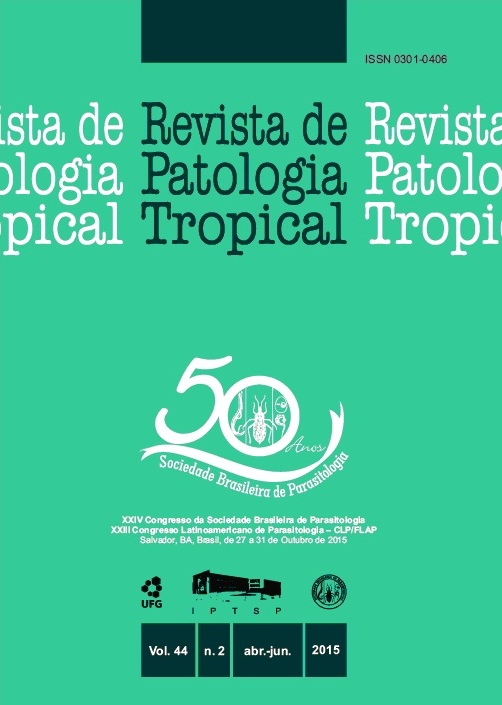BLOODSUCKING INSECTS IN RURAL AREAS ADJACENT TO THE CORUMBÁ IV HYDROELECTRIC DAM RESERVOIR, SANTO ANTÔNIO DO DESCOBERTO, GOIÁS, BRAZIL
DOI:
https://doi.org/10.5216/rpt.v44i2.36648Keywords:
Culicidae, Eichhornia crassipes, hydroelectric.Abstract
Eutrophic reservoirs of hydroelectric dams may favor the proliferation of macrophytes andbloodsucking insects. Currently, macrophyte overgrowth has been observed in some stretches ofthe Corumbá IV hydroelectric dam (CIV) reservoir. The occurrence of bloodsucking insects wasanalyzed in rural areas adjacent to the CIV reservoir. In two periods (March and July/August) tenhouses in the area with increased macrophyte proliferation (AG) and ten others in the area with lowmacrophyte proliferation (AP) were selected and sampled. Additionally, 100 macrophytes fromeach area were analyzed. A total of 35,788 insects were captured in light traps and 28% of thembelonged to families of bloodsucking insects, especially Culicidae. The occurrence of culicids wasdifferent between the AG and AP areas (p<0.05). Mosquitoes were more frequent and abundant inthe AG area. The larval survey showed that 100% of the houses visited had potential for mosquitobreeding. Overall, 302 mosquito larvae were collected among macrophytes, mainly in the AG area.It is concluded that there is a higher frequency of mosquitoes in areas with increased macrophyteproliferation, but the CIV reservoir is not the only breeding source of mosquitoes in the studied areas.Downloads
Downloads
Published
How to Cite
Issue
Section
License
The manuscript submission must be accompanied by a letter signed by all authors stating the full name and email address, confirming that the material has not been published or is under consideration for publication elsewhere, and agreeing to transfer copyright in all media and formats for Journal of Tropical Pathology. The authors will not be paid for published articles. They are solely responsible for the content of those articles, even if the Editor holds the right to adjust them to the norms of the journal.
The reviewers will not be paid for the peer review process.

